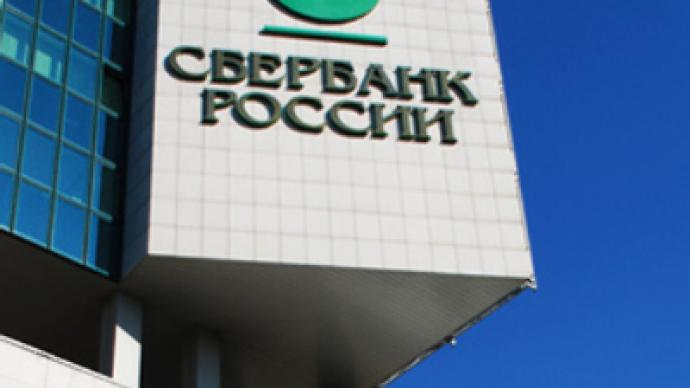Sberbank trims deposit rates

Russia’s largest bank, Sberbank, has cut deposit rates on Rouble deposits to 8.5%, responding to falls in the Central bank of Russia’s refinancing rate and slowing inflation.
The Sberbank’s move is expected to lead to similar moves by competitors, with Russia’s largest bank holding 54% of deposits as of December 1 2009, now bringing deposit rates below the inflation rate. It comes after individual deposit inflows for December reached 230 billion Roubles, or 35% of the 2009 total.
Troika Dialog analyst, Olga Veselova, says the Sberbank move is likely to be followed by other banks and lead to lower funding costs for banks.
“This is the second time Sberbank has cut its retail deposit rate in Roubles for the last several months. For the first time they did it November 2009, reducing the rates by the average 1%. Obviously, Sberbank’s move creates stimulus for other banks to do the same and, thus, reduce the cost of funding in the banking sector, which follows a lowering inflation and refinancing rate. Though Sberbank definitely remains the main landmark in the market of retail deposits, VTB’s role there has been constantly increasing lately, especially for regional banks. And VTB cuts its rates from time to time.”
Cheaper deposits are expected to allow Sberbank to invest at lower rates. Alexandr Dolgopolov, Deputy Board Chairman of Bank Vozrozhdeniye believes the trend towards lower deposit interest rates, which commenced in late 2009, will continue.
“We have decreased the rates about three times since November, and probably, we will do it again soon. Banks have been raising their rates to keep their investors, and people’s trust after the hot stage of the crisis has passed. Last year we had a bigger inflow than before the crisis, though we’ve never had particularly high rates. In the meantime loan portfolios of banks have decreased and the loan business on the whole has not got back to normal as the deposit market did, therefore, the inflow of deposits now exceeds the needs of the banks.”
The deposit inflows are leading to a reversal of the cash strapped liquidity environment of early and mid 2009 according to Uralsib Capital Chief Economist, Vladimir Tikhomirov.
“Actually, the move says that Sberbank has excessive liquidity, and the CB’s statistics confirms this.”
Tikhomirov sees the Sberbank’s move as reflecting both the sharp drop in inflation, and the Governments desire to boost the economy.
“Generally speaking, I see 2 groups of reasons here. First, it’s a lowering inflation, which, however, could give us a negative surprise next month. The second one is political pressure from Russia’s Government that seeks to rebound credit activity in the country.”
The Sberbank announcement comes after the Central Bank of Russia slashed the refinancing rate from 13% to 8.75% over 2009 with a series of cuts throughout the year, as annual inflation eased from a high of more than 13% to 8.8% for 2009. Despite this Tikhomirov doesn’t see the Sberbank move as reflecting anticipated further cuts.
“I don’t think this necessarily happened ahead of another cut in the refinancing rate. Russia’s Central Bank isn’t a source of long money for commercial banks, which makes us very different from the rest of the world. Russia’s Central Bank credits commercial banks for 3 months at the longest, which is too short a period for crediting households or companies. And the reason why banks in Russia offer such expensive money is the lack of internal financing and high risks of borrowing it abroad.”












